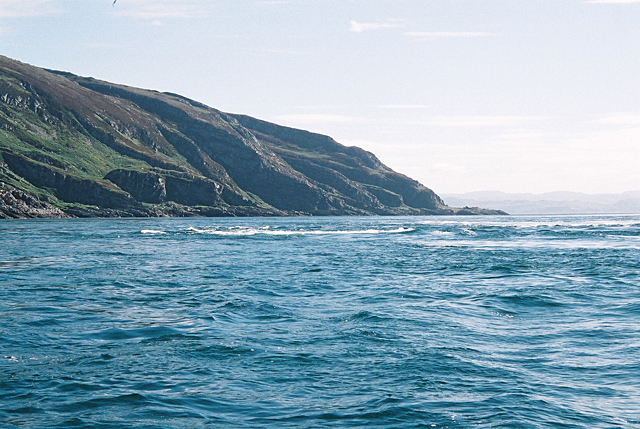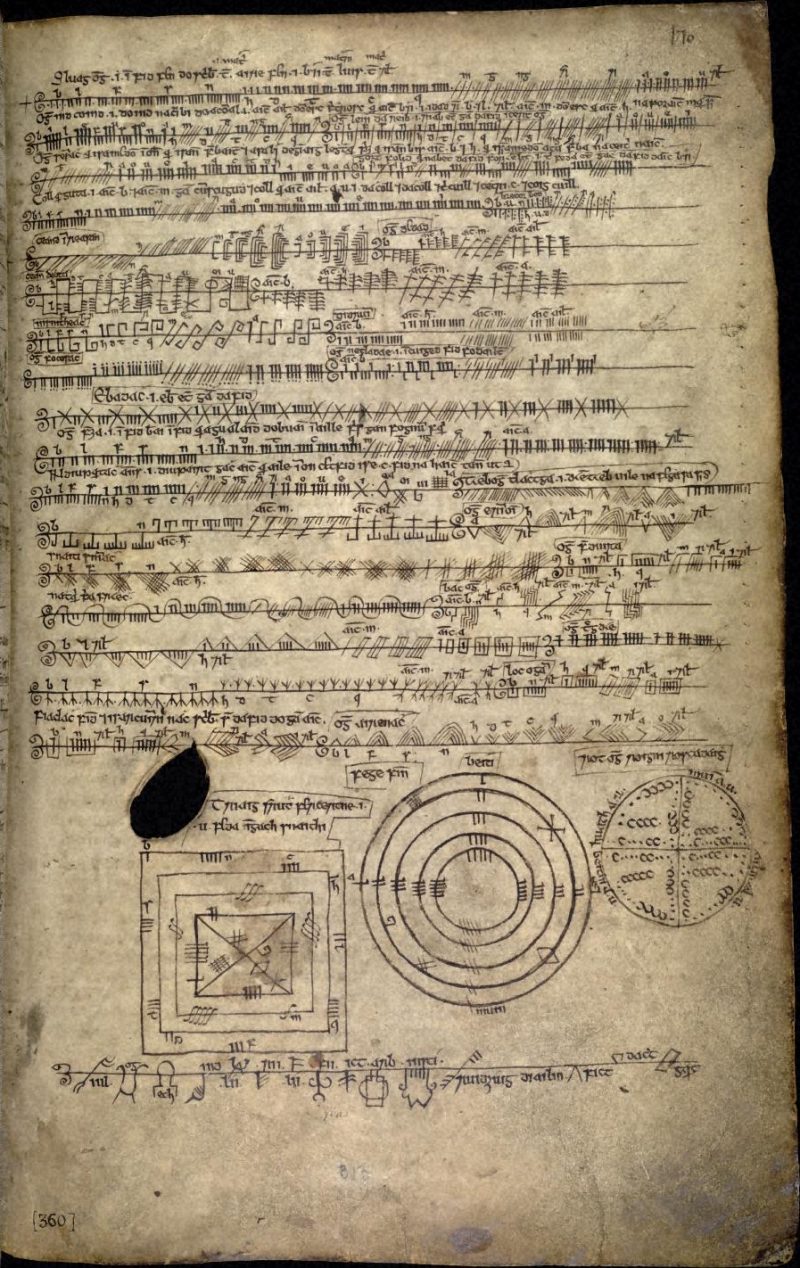|
OGMA
Ogma () is a god from Irish mythology, Irish and Scottish mythology. A member of the Tuatha Dé Danann, he is often considered a deity and may be related to the Gauls, Gallic god Ogmios. According to the In Lebor Ogaim, Ogam Tract, he is the inventor of Ogham, the script in which Irish Gaelic was first written. Name and Epithets Etymology The name Ogma is believed to originate from the Proto-Indo-European root ''*ak-'' or ''*ag-'' meaning "to cut," which refers to the method in which ogham was incised into stone and wood. In Ogham, his name would be written . Epithets Ogma is given three epithets in Irish Gaelic tradition: ''Grianainech'' “sun-faced” or “shining, radiant countenance” on p. 303 of the ''Táin Bó Cúailnge'' (The Cattle Raid of Cooley) and p.187 of Lebor Gabála Érenn (Book of Invasions); ''Trenfher'' “Strongman” or “Champion” in sections 59 and 162 of the Do Cath Mag Tuired (Second Battle of Moytura); and ''Griain-éigis'' “Shining s ... [...More Info...] [...Related Items...] OR: [Wikipedia] [Google] [Baidu] |
Ogmios
Ogmios (sometimes Ogmius; ) is the name given to a Celtic god of eloquence described in ''Heracles'', a work of the Syrian satirist Lucian. Lucian's ''Heracles'' is a short text, intended to be read aloud before a longer public performance. It describes Lucian's viewing of a strange image of Ogmios in Gaul. In this image, the god is depicted as a dark-skinned, aged version of the Greek hero Heracles, with a group of happy devotees tied by bejewelled chains to the god's tongue. A Celt approaches Lucian and explains these features, telling him that they reflect a native association of Ogmios with eloquence (which, the Celt explains, reaches its highest level in old age). Lucian uses this anecdote to prove to his audience that, in old age, he is still competent to deliver public performances. The evidence outside of Lucian's text for the god Ogmios is quite limited. No image has been found which comes close to the one Lucian describes. The only mostly-accepted attestations of the ... [...More Info...] [...Related Items...] OR: [Wikipedia] [Google] [Baidu] |
Lee Lawrie
Lee Oscar Lawrie (October 16, 1877 – January 23, 1963) was an American architectural sculptor and an important figure in the American sculpture scene preceding World War II. Over his long career of more than 300 commissions Lawrie's style evolved through Modern Gothic, to Beaux-Arts, Classicism, and, finally, into ''Moderne'' or Art Deco. He created a frieze on the Nebraska State Capitol building in Lincoln, Nebraska, including a portrayal of the announcement of the Emancipation Proclamation. He also created some of the architectural sculpture and his most prominent work, the free-standing bronze '' Atlas'' (installed 1937) at New York City's Rockefeller Center. Lawrie's work is associated with some of the United States' most noted buildings of the first half of the twentieth century. His stylistic approach evolved with building styles that ranged from Beaux-Arts to neo-Gothic to Art Deco. Many of his architectural sculptures were completed for buildings by Bertram Goo ... [...More Info...] [...Related Items...] OR: [Wikipedia] [Google] [Baidu] |
Scottish Mythology
Scottish mythology is the collection of myths that have emerged throughout the history of Scotland, sometimes being elaborated upon by successive generations, and at other times being rejected and replaced by other explanatory narratives. Nature myths The myths and legends of Scotland have a "local colour" as they tell about the way of life during the olden times, apart from giving a perspective of the nature of the country during various seasons of the year. It was the belief that Beira, the Queen of Winter, had a firm hold on the country by raising storms during January and February thus preventing greenery to emerge. She was considered a tough and brutal old woman who stirred the deadly spiraling action of Corryvreckan, ushering snow, as well as torrents resulting in the overflow of rivers. Even the creation of lochs and mountains were attributed to her. Scottish mythology is not like the Greek and Roman myths as it deals with various aspects of nature. In this conte ... [...More Info...] [...Related Items...] OR: [Wikipedia] [Google] [Baidu] |
Hill Of Tara
The Hill of Tara ( or ) is a hill and ancient ceremonial and burial site near Skryne in County Meath, Ireland. Tradition identifies the hill as the inauguration place and seat of the High Kings of Ireland; it also appears in Irish mythology. Tara consists of numerous monuments and earthworks—dating from the Neolithic Ireland, Neolithic to the Iron Age Ireland, Iron Age—including a passage tomb (the "Mound of the Hostages"), Tumulus, burial mounds, Enclosure (archaeology), round enclosures, a standing stone (believed to be the ''Lia Fáil'' or "Stone of Destiny"), and a ceremonial Avenue (archaeology), avenue. There is also a church and graveyard on the hill. Tara forms part of a larger ancient landscape and Tara itself is a protected National monument (Ireland), national monument under the care of the Office of Public Works, an agency of the Government of Ireland, Irish Government. Name The name ''Tara'' is an anglicization of the Irish name or ('hill of Tara'). It is al ... [...More Info...] [...Related Items...] OR: [Wikipedia] [Google] [Baidu] |
Lugh
Lugh or Lug (; ) is a figure in Irish mythology. A member of the Tuatha Dé Danann, a group of supernatural beings, Lugh is portrayed as a warrior, a king, a master craftsman and a saviour.Olmsted, Garrett. ''The Gods of the Celts and the Indo-Europeans''. University of Innsbruck, 1994. p.117 He is associated with skill and mastery in multiple disciplines, including the arts.Monaghan, Patricia. ''The Encyclopedia of Celtic Mythology and Folklore''. Infobase Publishing, 2004. pp.296-297 Lugh also has associations with oaths, truth, and the law, and therefore with rightful kingship.Koch, John T. ''Celtic Culture: A Historical Encyclopedia''. ABC-CLIO, 2006. p.1200 Lugh is linked with the harvest festival of Lughnasadh, which bears his name. His most common epithets are ''Lámfada'' ( ; "long hand" or "long arm", possibly for his skill with a spear or his ability as a ruler) and ''Samildánach'' ( ; "equally skilled in many arts"). This has sometimes been anglicised as "Lew of ... [...More Info...] [...Related Items...] OR: [Wikipedia] [Google] [Baidu] |
Ériu (journal)
''Ériu'' is an academic journal of Irish language studies. It was established in 1904 as the journal of the School of Irish Learning in Dublin.''Ériu'' Royal Irish Academy. When the school was incorporated into the Royal Irish Academy in 1926, the academy continued publication of the journal, in the same format and with the same title. Originally, the journal was published in two parts annually, together making a volume, but parts slipped further apart after Volume III. Articles are written in either Irish or English. References External links *[...More Info...] [...Related Items...] OR: [Wikipedia] [Google] [Baidu] |
Fir Bolg
In medieval Irish myth, the Fir Bolg (also spelt Firbolg and Fir Bholg) are the fourth group of people to settle in Ireland. They are descended from the Muintir Nemid, an earlier group who abandoned Ireland and went to different parts of Europe. Those who went to Greece became the Fir Bolg and eventually return to Ireland, after it had been uninhabited for many years. After ruling it for some time and dividing the island into provinces, they are overthrown by the invading Tuatha Dé Danann. Carey, John''The Irish National Origin-Legend: Synthetic Pseudohistory''. Department of Anglo-Saxon, Norse and Celtic, University of Cambridge, 1994. pp. 1–4 Myth ''Lebor Gabála Érenn'' tells of Ireland being settled six times by six groups of people. The first three—the people of Cessair, the people of Partholón, and the people of Nemed—were wiped out or forced to abandon the island. The Fir Bolg are said to be descendants of the people of Nemed, who inhabited Ireland befo ... [...More Info...] [...Related Items...] OR: [Wikipedia] [Google] [Baidu] |
Proto-Indo-European
Proto-Indo-European (PIE) is the reconstructed common ancestor of the Indo-European language family. No direct record of Proto-Indo-European exists; its proposed features have been derived by linguistic reconstruction from documented Indo-European languages. Far more work has gone into reconstructing PIE than any other proto-language, and it is the best understood of all proto-languages of its age. The majority of linguistic work during the 19th century was devoted to the reconstruction of PIE and its daughter languages, and many of the modern techniques of linguistic reconstruction (such as the comparative method) were developed as a result. PIE is hypothesized to have been spoken as a single language from approximately 4500 BCE to 2500 BCE during the Late Neolithic to Early Bronze Age, though estimates vary by more than a thousand years. According to the prevailing Kurgan hypothesis, the proto-Indo-European homeland, original homeland of the Proto-Indo-Europeans may ... [...More Info...] [...Related Items...] OR: [Wikipedia] [Google] [Baidu] |
Irish Gaelic
Irish (Standard Irish: ), also known as Irish Gaelic or simply Gaelic ( ), is a Celtic language of the Indo-European language family. It is a member of the Goidelic languages of the Insular Celtic sub branch of the family and is indigenous to the island of Ireland. It was the majority of the population's first language until the 19th century, when English gradually became dominant, particularly in the last decades of the century, in what is sometimes characterised as a result of linguistic imperialism. Today, Irish is still commonly spoken as a first language in Ireland's Gaeltacht regions, in which 2% of Ireland's population lived in 2022. The total number of people (aged 3 and over) in Ireland who declared they could speak Irish in April 2022 was 1,873,997, representing 40% of respondents, but of these, 472,887 said they never spoke it and a further 551,993 said they only spoke it within the education system. Linguistic analyses of Irish speakers are therefore based ... [...More Info...] [...Related Items...] OR: [Wikipedia] [Google] [Baidu] |
Ogham
Ogham (also ogam and ogom, , Modern Irish: ; , later ) is an Early Medieval alphabet used primarily to write the early Irish language (in the "orthodox" inscriptions, 4th to 6th centuries AD), and later the Old Irish language ( scholastic ogham, 6th to 9th centuries). There are roughly 400 surviving orthodox inscriptions on stone monuments throughout Ireland and western Britain, the bulk of which are in southern areas of the Irish province of Munster. The Munster counties of Cork and Kerry contain 60% of all Irish ogham stones. The largest number outside Ireland are in Pembrokeshire, Wales. The inscriptions usually consist of personal names written in a set formula. Many of the High Medieval '' Bríatharogaim'' (kennings for the ogham letters) are understood to reference various trees and plants. This interpretation was popularized by Robert Graves in his book '' The White Goddess''; for this reason, Ogham is sometimes known as the Celtic tree alphabet. The etymology of ... [...More Info...] [...Related Items...] OR: [Wikipedia] [Google] [Baidu] |
In Lebor Ogaim
''In Lebor Ogaim'' ("The Book of Ogams"), also known as the Ogam Tract, is an Old Irish treatise on the ogham alphabet. It is preserved in R.I.A. MS 23 P 12 308–314 (AD 1390), T.C.D. H.3.18, 26.1–35.28 (AD 1511) and National Library of Ireland MS G53 1–22 (17th century), and fragments in British Library The British Library is the national library of the United Kingdom. Based in London, it is one of the largest libraries in the world, with an estimated collection of between 170 and 200 million items from multiple countries. As a legal deposit li ... Add. 4783. It does not bear a title in the manuscripts, but it is mentioned in the ''Auraicept na n-Éces'' (2813f.) as , whence the commonly used title. The ''Ogham Tract'' is independent of the ''Auraicept'', and is our main source for the . The ''Ogham Tract'' also gives a variety of some 100 "scales" of variant or secret modes of writing ogham (92 in the Book of Ballymote), for example the "shield ogham" (''ogam aire ... [...More Info...] [...Related Items...] OR: [Wikipedia] [Google] [Baidu] |







